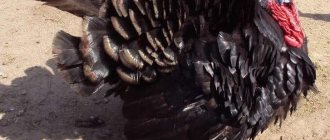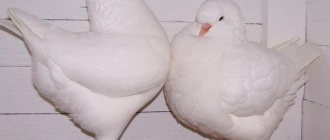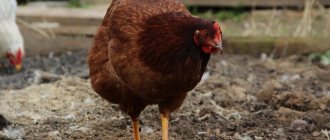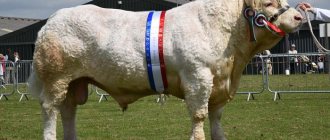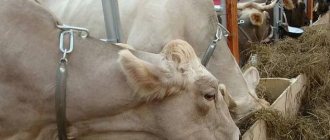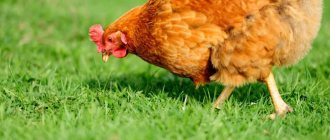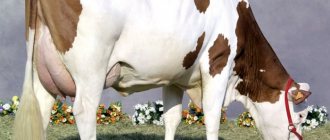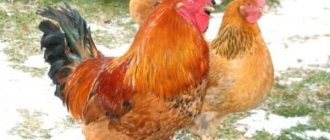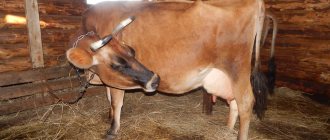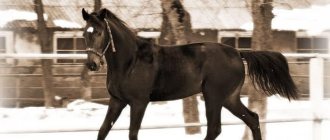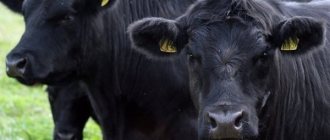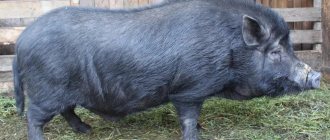Beef bulls are highly productive, which is why many farms are focused specifically on their breeding.
Fattening bulls for meat is a profitable and quite popular type of agricultural business in many countries. The maximum benefit from it can be obtained only if the cattle breed is chosen correctly.
To minimize feed costs and obtain a large amount of meat in a short period, it is necessary to raise bulls and cows of beef breeds that are large in size and gain muscle mass quickly.
Let's look at the varieties and the best breeds.
What are the characteristics of beef bull breeds?
Beef breeds of bulls have a certain body structure. They have an elongated body, rounded hips, shoulder blade area, and developed muscles. They also have quite thick skin. The weight and height of such individuals is much higher than that of representatives of other directions. There are three subgroups of beef bulls with their own specific characteristics.
- Meat large breeds obtained by crossing wild zebu and domestic species of cattle. Most often they are grown in hot regions, since they do not tolerate cold very well. They have a massive body with well-developed muscles.
- High productivity breeds.
They quickly develop muscle mass; fat accumulates literally from the first days after birth. They have juicy, fatty and nutritious meat, with an abundance of proteins. Beef breeds of bulls have a certain body structure - Beef breeds of bulls that grow and develop slowly. They reach normal weight no earlier than 2-2.5 years. They have quite a lot of muscle mass, but, on the contrary, little fat. They are unpretentious, quickly adapt to any climate, are resistant to diseases and are recommended for breeding new species.
The meat of beef bull breeds differs depending on genetic characteristics, feeding, availability of range, and quality of life. If there is a free range, the breeder can save a lot on feed, because there will be no need to stock up on large quantities of feed. In addition to greens and hay, bulls need compound feed; as for root vegetables, they are given more like a delicacy. But beef bulls need vitamins and minerals to maintain strong bones, muscles and overall health.
Gaur | Height 2.3 m
Gaur is the largest bull in the world, growing up to 2.3 meters at the withers and weighing up to 1.5 tons. The length of the animal's body usually does not exceed 3 meters. The crescent-shaped horns grow on average to 90 centimeters. Gaurs are common in the dense forests of India, Pakistan, Thailand and Bangladesh. Wild animals are usually active during the day, but if they settle close to human habitations, they prefer to be nocturnal. The species is in danger of extinction: there are about 20 thousand individuals in the wild. https://www.youtube.com/watch?v=tvpSBtS0Tc4
31 8
Beef breeds of bulls of British origin
Also check out these articles
- Katum sheep
- Growing pepper seedlings
- What to feed quails
- The benefits and harms of garlic
Beef breeds of bulls from Britain are distinguished by significant body weight. They have very tasty meat with small layers of fat, which makes it even more juicy and tender. It is also worth noting that many of the bulls of these breeds have fur, which is due to the peculiarities of the local climate. Representatives of British breeds are known all over the world and have excellent performance.
- The Aberdeen Angus bull was bred in the 19th century in Scotland.
Already in 1878, the purebred herd was brought to the United States, and then to other countries around the globe. The body is round, the bones are thin but strong. The legs are short, but due to the extensive body, the height at the withers can reach up to 150 cm. The weight of bulls is up to 1000 kg. The head is small, and there is practically no neck; the head almost merges with the shoulders. Males are hornless. Suit black or red. Slaughter yield of “marbled”, juicy meat, with rare layers of fat – 60%. Beef breeds of bulls of British origin - The Hereford beef breed of bulls was developed in the 18th century. Considered the most popular in the world. He has a barrel-shaped, wide and squat build, and a developed muscular system. The average weight of a bull is 900-1350 kg. The neck is short, the legs are strong. The color is mostly red, and the legs and tail brush are white. Height up to 130 cm. Bulls do not require serious care, move long distances, and quickly adapt to new weather conditions. The meat is “marbled”, excellent taste, high slaughter yield (70%). At the same time, calf mortality is very low, daily weight gain is 800-1250 g.
- The Shorthorn bull appeared in the 18th century in the north-east of Great Britain. The breed has two subspecies – meat and dairy and meat. They are used for selection, quickly acclimatize, but are not recommended for the southern regions, since bulls are covered with short but thick hair. The skeleton is strong, the constitution is loose. The weight of bulls reaches 950 kg. The color is red, red and white, white or red roan. The meat is “marbled”, fibrous and very juicy, slaughter yield up to 67%. The young are distinguished by their early maturity, but their fertility is reduced, so individuals of this species are expensive.
- The Galloway breed of beef bulls is adapted to year-round grazing. They acclimatize well; bad weather and frequent precipitation are not a problem for them. They are bred on almost all continents, very popular in Siberia. The bones are strong, the body is slightly elongated. The body is covered with thick, wavy, but hard hair up to 20 cm. There is a soft undercoat. Bulls weigh up to 850 kg. Young animals are early maturing, daily weight gain is up to 1100 g. The meat is practically fat-free, very tasty, slaughter yield is up to 62%.
Kinds
For many livestock breeders, fattening bulls for meat is not only the most effective way to make money at home, but also a good opportunity to get high-quality, lean meat that is suitable even for children.
The most common classification of beef breeds for fattening bulls is the following: British beef breeds, Franco-Italian and Zeb.
Each of these groups differs in the rate of maturation, level of productivity and conditions of detention. We will talk further about which beef breeds of bulls are best for fattening.
British
Photo:
British beef bull breeds are considered the most popular among farmers. There are about 200 million representatives of this group in the world.
British cows are distinguished by early maturity and high productivity. They adapt well to life on pastures and tolerate temperate continental climates.
Important! The meat of British bull breeds has “marbling” - a feature of the meat with an even distribution of fat veins, which resembles a cut of a stone.
Franco-Italian
French-Italian purebred beef bulls are becoming increasingly popular among livestock farmers. The most important and attractive characteristic is that bulls of the French-Italian group quickly gain live weight, without accumulating lard and depositing fat.
The meat of these bulls contains a minimum of dry matter and does not have marbling, so they are most often taken for fattening. As for the negative traits of French-Italian beef breeds, these include difficulties during calving and the birth of still calves.
Did you know? Franco-Italian breeds are considered one of the “oldest” beef breeds of bulls.
Zebuidae
Zebu are unique breeds suitable for cultivation even in particularly dry regions of the country. Bulls of these breeds are adapted to harsh conditions of heat and drought.
Zebu bulls were created by crossing European and British cattle breeds with zebu. These breeds are valued not only for their unpretentiousness in maintenance, but also for their resistance to diseases, especially blood-sucking insects.
Zebu bulls can feed on reeds and sedges, which indicates a lower quality of meat and a low level of productivity.
French breeds of beef bulls
French beef breeds of bulls are distinguished by excellent meat, but it is the cows of these breeds that are primarily famous, since for the most part their milk is used to make famous, delicious French cheeses.
- The Charolais bull is a breed bred today in more than 50 countries around the world.
Bred in the 18th century, in the county of Charolais (France). It has an elongated, muscular body with a straight back, a wide head, and a creamy white color. The weight of bulls reaches 1200 kg, the record weight is 1500 kg. Slaughter yield – 60-70%. The young animals grow quickly, the daily weight gain is 1100 g on average. The meat is tasty, contains up to 20% proteins. The Charolais breed is unpretentious, can cross with other species, and is early ripening. Disadvantages apply exclusively to females - calving may be difficult. French breeds of beef bulls - The Saler breed of beef bulls was bred in the mid-19th century. Known for Saler cheese (classified as “noble”), which is made from the milk of this breed. Bred in 25 countries. It has a dense body, the body is not very high, up to 150 cm. The bones are strong. There are long, strong horns. Legs are straight and strong. The color is dark red. Bull weight up to 1300 kg. The meat is marbled and fatty.
- The Aquitaine bull breed was developed in 1962 in southwest France. The color is light brown, wheat. The body is wide, muscular, elongated. The weight of bulls reaches 1300 kg. Calves are born weighing 40-50 kg and can gain up to 2 kg of weight daily, but only on good feed. High quality meat, slaughter yield up to 70%.
Buffaloes
The animals are very large: their height is about 3 m, their shoulder width is up to 2 m. Bulls weigh more than a ton. Buffaloes differ from other representatives by having the largest horns. Bone growths reach 2 m. The habitat of the animals is Thailand, Vietnam, India. African representatives are famous for their body height (up to 2 m); Indian bulls boast the longest horns. Buffaloes are very aggressive. Even large predators are afraid of them. Bulls graze in herds, so you can easily become their victim. Moving in flocks, they plow the land, thereby benefiting agriculture.
Large bulls are most often the result of selection. They are valued for their endurance, performance, and ability to adapt to difficult conditions.
Source
Bulls of Central Asian origin
We recommend reading our other articles
- How to grow cabbage seedlings from seeds at home
- Autoclave Malinovka 2 in 1
- What to graft cherries on
- How to properly prepare bees for wintering
Meat breeds of bulls of Central Asian origin are distinguished by their unpretentiousness in care and nutrition. They eat any type of food, even the cheapest mixed feed, but they have good health and good resistance to frost.
- The Kalmyk breed was bred in Kalmykia from cows and bulls of the Mongolian herd around the 17th century.
The bones are strong, the body is dense, with a wide body. Legs are strong, dry, of medium length. The muscles are well defined. Height up to 130 cm. Bull weight up to 1100 kg. The color is red, less common are red-motley, red with white spots, and brown-motley. Daily weight gain in calves is up to 1 kg. Slaughter yield up to 60%. The meat is of high quality, interspersed with fat, very juicy. Bulls of Central Asian origin - The Kazakh white-headed beef breed of bulls appeared around the 20th century by crossing Hereford bulls and Kazakh and Kalmyk cows. The body is barrel-shaped, wide. There is a lot of muscle mass, the bones are massive and strong. The color is red, and the head, belly, lower legs and tail are white. Height up to 130 cm. Bull weight up to 950 kg. The daily weight gain of calves is 1200-1600 g. The bulls are early maturing, the slaughter yield is 53-65%, the meat is juicy, there are fatty layers between the muscles.
Bison | Height 2.7 m
In sixth place among the largest bulls in the world is a representative of the bull subfamily - the bison . The species is considered the last representative of wild bovids and the largest land mammal in Europe. At the withers, males grow up to 188 centimeters, and the body length can reach 2.7 meters. Bison weigh about 1 ton. A small population of bison is found in Spain, Belarus, Ukraine, Slovakia and Germany. In Russia, the species is on the verge of extinction and is kept in bison reserves. The sharp decline in the population has been associated with intensive hunting of artiodactyls since ancient times.
What other meat breeds have high productivity?
There are many more meat varieties, but they are all pretty typical. And yet it is worth highlighting three more species that deserve special attention. The beef breeds of bulls described below are distinguished by their record weight and carcass slaughter weight.
- The Belgian Blue Bull was bred in Belgium.
Has a very prominent, muscular body. The skin is thin, and veins often appear through it. The color is white and blue, which is where the name comes from, but sometimes you can find a bull with a black, mottled or red coat. The body is elongated, squat, the legs are short and strong. The weight of a bull reaches 1250 kg. Individuals from one year of age are released for slaughter when their body weight reaches 470 kg. Slaughter yield – 70-80%. The breed is distinguished by excellent meat, early maturity, and a gentle disposition. However, they can hardly withstand frost and have a rather weak immune system. As for calving, it is very difficult and often requires a caesarean section. Highly productive meat breeds - Santa Gertrude was bred in the USA, Texas in the middle of the 20th century. Bulls of this breed are often used for the selection of new species; they quickly acclimatize, are hardy, can walk long distances to pasture, and are unpretentious to housing conditions and feeding. The color is red, white spots on the lower part of the body are acceptable. The weight of bulls reaches 700-800 kg, the slaughter yield is 65%. Calves have an excellent immune system, early maturing - 1200 g of growth per day.
- Braman is an Indian breed of beef bulls, bred on the basis of Indian zebu. Despite the fact that the breed was bred in India, there this is a sacred animal and the meat is not eaten, but outside the country, bulls are bred as meat animals quite successfully. The color is varied, from gray to black, with and without spots. There is a hump on the neck, there are also large floppy ears, and a lot of excess floppy skin. The weight of bulls is up to 1000 kg. Slaughter yield is within 65-70%.
Kuprey | Height 1.8 m
Kouprey is an extinct species that was one of the largest bulls in the world. The height of an adult individual reached 180 centimeters at the withers, and its body weight was about 800 kilograms. The horns of large males grew up to 80 centimeters. This species has been poorly studied by humans, as these artiodactyls preferred a secretive lifestyle in the tropical forests of Asia. Presumably, the kouprey was a hybrid of banteng and gaur, as it had many similar features with them. A distinctive feature of males from females was a large, long tuft of hanging hair in the neck area.
Breeding history
Kazakh specialists created a base for breeding. Here the Hereford and Kalmyk breeds were crossed with local heifers. The scientists had a goal to obtain a breed with high meat productivity, and which, in addition, would easily adapt to unfavorable climatic conditions, where heat replaces cold.
Official recognition occurred in 1950, at which time the cattle received their name - Kazakh white-headed. From the local livestock, the descendants adopted hardening and not being picky about the food supply. Animals can live well on pasture. The following qualities were inherited from Hereford producers:
- precocity of young animals;
- high quality meat products;
- high percentage indicators for slaughter yield.
You can get 74% of the slaughter weight after fattening an adult bull. But the selection work did not stop there. Experts continue to improve the performance of whiteheads through new breeders and subsequent breeding within themselves.
Keeping the Kazakh breed is quite a profitable business. This is especially beneficial for farms that produce their own fodder. The most economical method of fattening is a diet in which 70% comes from green mass and the remaining 30% from concentrates.
Read also: Goat diseases: types of diseases, main symptoms and their treatment
Repp is the best producer
The photo of the world's largest inseminating bull of the Podolsk breed is striking. This huge creature is called Repp, lives at a breeding center near Cherkassy in Ukraine. Weight is more than 1.5 tons. It grew to its impressive size naturally, thanks to free housing and proper nutrition. Mainly eats hay, likes soy, a little sugar.
Every year, about 50 thousand healthy, viable calves are obtained from him using artificial insemination of cows. Farmers are afraid to bring cows for a personal meeting with the curly-haired handsome man because of his impressive size and unpredictable behavior. The Ox does not tolerate disrespect and is slightly touchy towards people.
The longest
The world championship in body length can be safely given to the yak, which reaches large sizes in length - more than 4 meters.
The breed of males grunting when dissatisfied - sarlyk - got its name in Russia, where they live in the vastness of Buryatia, Altai, Tyva and Yakutia. These artiodactyls are remarkable for their shaggy appearance, like mammoths, because the hair, hanging in long tufts, covers the legs up to the hooves. Despite the weight, yaks easily overcome the mountain peaks of Tibet and feel comfortable in the thin oxygen atmosphere at an altitude of more than 6000 meters.
Even among ice, stone, and solid snow, these animals can find food for themselves. Residents of mountainous regions raise humpbacked bulls not only for meat, but also for riding them along mountain trails.
Maintenance and care
Depending on the time of year and the capabilities of the farm, the principles of keeping animals and caring for them vary.
Summer walking area
Designed for grazing at a short distance from the farm. It is a fenced area with good grass cover. The estimated walking area for one animal must be at least 25 square meters. m.
The site should be equipped with feeders, drinkers and have a canopy under which the herd can hide from bad weather and the heat of the day.
Arrangement of the barn
Animals are kept in barns during the cold season. Here they are most often secured with a leash, and less often kept loose. The barn should be divided into stalls 120–150 cm wide, arranged individually for each animal.
The stall must have a feeder (distribution of feed by a feed dispenser or manually) and a drinking bowl (preferably automatic).
The contents are carried out on deep or shallow litter. Deep litter is gradually poured, trampled down and increases in thickness, which is 35–40 cm. For such litter, peat or sawdust is used, since straw has low absorbent properties.
Conditions of detention
Despite their unpretentiousness, red steppe cows are sensitive to high humidity, poor air composition, poor lighting and lack of walking. Normal temperature for cows ranges from +4–20 °C. They can tolerate temperatures as low as –20 °C, but in this case productivity deteriorates significantly.
Humidity in the barn should be maintained at 65-70%. Normal air speed is no more than 0.3 m/s. The carbon dioxide content in the air should not exceed 0.5%. Values exceeding this indicator lead to lethargy, apathy of animals, and deterioration of the immunity of young animals.
The optimal intensity of artificial lighting for them ranges between 70 lux, and the area of windows for natural light should occupy at least 15% of the total area of the walls.
Cleaning
Manure collection can be carried out by mobile units, tray conveyors, scraper units, hydraulic flushing or manually. Manure and shallow bedding on large livestock farms are removed daily to prevent outbreaks of epidemics. On small farms, cleaning is done once every two days.
Feeders and drinkers are washed and disinfected daily, and any remaining contaminated water and stale food are removed from them. Disinfection is usually automatic - a weak antiseptic solution is added to the container along with water, which is then drained.
Shallow litter is poured as the contaminated litter is removed. Animals should not be allowed to stand idle on a hard concrete surface.
Preparing for milking
This is a mandatory procedure that stimulates the milk secretion reflex and prevents the entry of foreign microflora into raw milk. Preparation begins with a gentle udder massage, which is carried out by stroking and squeezing the milk lobes.
Then the udder is washed with warm water and necessarily wiped dry with a clean soft cloth. The last stage is tying the tail and milking the first streams of milk, which may be infected with pathogenic microorganisms.
Is it true that bulls don't like the color red?
The dislike of bulls for the color red seems to be a proven fact. It’s not for nothing that a bullfighter waves a bright cloak (kapote) in front of the animal’s nose to force the animal to attack. There is even such an expression as a red rag for a bull. In addition, in almost all cultures this color symbolizes aggression and strong feelings.
As it turns out, there is much more speculation than truth in the theory about bulls and the color red. Therefore, we tell you how things really are.
What colors do bulls distinguish?
First, it’s worth understanding the peculiarities of vision in bulls. Bulls, like other cattle, really do not distinguish colors well; not the entire spectrum that a person sees is available to them.
This is due to the structure of the visual organs and is observed in all representatives of the species. The retina of the eye contains light-sensitive cells responsible for color perception.
Their number and location determine how well the animal sees during the day and in the dark.
This feature can be explained simply - bulls do not need to be well versed in colors to survive. Much more important for them is panoramic vision and the ability to distinguish objects in the dark. The task of the bull's eye is not to convey a bright image of the surrounding world, but to notice a potential threat in time. The bright red rag of a bullfighter is nothing more than a pale spot for bulls.
By and large, it makes no difference to the animal what color the fabric is.
Then what really irritates the bull?
If the color red has nothing to do with increasing aggression levels in a bull, then what does? Why does the animal become ferocious at the sight of the hood? In fact, if you look closely, it becomes clear that one glance at the red rag is not enough. The bull does not react in any way to the bullfighter when he enters the arena with a cloak. But as soon as he starts waving a rag in front of the animal, the animal loses its temper.
That's right: the bull is irritated not by the color of the cloak, but by the very fact of movement. Scientists tend to believe that bulls not only have poor color vision, but are also nearsighted. They perceive the flickering of fabric in close proximity to themselves as a challenge and an attempt to attack. The theory is confirmed by an experiment with two men.
One of the volunteers was dressed in a red suit, and the other in a black suit. The first stood motionless in place, and the second ran as soon as the bull approached him. The animal did not pay attention to the man in red, but the fugitive seriously angered the animal. The reason why a bullfighter always wears a crimson cape has nothing to do with bulls’ particular dislike of the color.
This tradition has long roots and quite understandable origins.
Why is a bullfighter's cape always red?
The myth that red enrages bulls originated in bullfighting centuries ago. Fierce confrontations between beast and man, combined with such a spectacular attribute, led many to believe that it was the bright color of the cloak that provoked the bull to attack. For a long time, people simply did not think about the true reasons for the animal’s behavior.
In fact, the hood could have been any color - the bull would still charge at the bullfighter due to the movement. Why then is the cape always made red? Today this is partly a tribute to tradition, but once upon a time the choice fell on a rich crimson shade solely for practical reasons. Blood is less noticeable against a red background.
A black one, on which all the spots are not so obvious, would have been suitable, but here the entertainment of the performance played a role. A bullfighter with a red cloak is more noticeable in the arena; the color adds drama and theatricality to what is happening. Red symbolizes the death of one of the participants in the battle. There was also a completely logical explanation for the bull’s anger.
Animals of a special breed are selected for the performance. From birth they develop aggressive behavior. And to make the already not the friendliest animal even more irritable, it is not fed for some time before the fight. Hunger and the annoying waving of a rag in front of your nose - few people will like this, and an animal with a violent disposition will not restrain itself.
The crimson color does not evoke any special emotions in bulls; it only emphasizes the general atmosphere of passion. Thus, the popular belief that bulls hate red turned out to be nothing more than a myth. The belief dates back to the Middle Ages, when bullfighting became a popular entertainment. Since then, science has advanced greatly and proven the theory to be untenable.
Therefore, the phrase “like a red rag to a bull” is just a spectacular figure of speech that has nothing to do with the truth.
- Elena Romanenko
Author Elena Romanenko ·
Meat and evolution
Anthropologists have proven that the fact that people began to eat the meat of large animals played a key role in the evolution of the ape into humans. Our ancestors began eating large animals about three million years ago. Many people think that meat is a heavy food. In fact, this is a much more effective food for humans than plant-based food. Ruminant herbivores work a lot with their jaws, for which they have developed powerful chewing muscles, and they spend most of their lives chewing food. The transition of humans from plant to animal foods led to the fact that the chewing muscles began to decrease, making room for the growth of the brain and, as a result, intelligence. Moreover, to track, kill, butcher and eat an animal, you need to think a lot more with your head, and be able to do more than just pick a plant.
Tagilskaya
Local species of these cattle were considered common with low milk productivity. But then, when crossed, steel is valued for its good milk yield - within a year, up to 5000 liters of milk are obtained from one cow. But the breed is more famous for its meat performance.
There are cows with all sorts of colors. White, spotted, black, red, red- and black-and-white, piebald, brown and gray cows are common in households. They all have a common core strength, a long and thin neck, and a powerful torso.
Productivity of the breed:
| Breed data | Indicators |
| Average weight of cows | 450-590 kg |
| Average weight of bulls | 890-1240 kg |
| The amount of milk during the lactation period | 4000-4600 l |
| Milk fat content | 4,1% |
| Killer exit | 49-52% |
The breed is unpretentious in feeding and unpretentious in care. In the summer, keeping animals becomes significantly more economical. Cows tolerate changes in climate conditions well.
Advantages of the breed:
- low cost of the animal;
- high dispensing speed;
- calm disposition;
- excellent sense of smell;
- no need for careful animal care.
Minuses:
- freshly milked milk has a slight herbal taste;
- low percentage of protein in milk;
- low fat content;
- visually crooked legs.
Kholmogory
A representative of the motley breed of large-horned cattle is the Kholmogory breed. Their parents were Holstein bulls, Dutch bulls and a motley breed of cows. The Kholmogory breed of spotted cows produces a lot of milk with a fat content of up to 3.8 percent.
Adult males weigh 820 and 950 kilos. Newborn bull calves emerge weighing approximately 39 kg. One-year-old males weigh 300 kilos. Slaughtering brings about 65 percent of the yield. To produce more beef, males are often kept for fattening.
The Kholmogory breed is strong and broad-boned, with high legs and a long body. The animal's head is medium, the muzzle is narrow. The elastic, black-and-white leather has a medium thickness.
